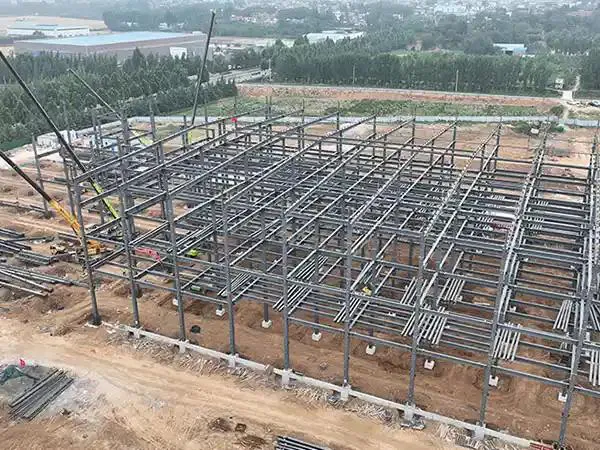Поддержание Стальная структура завода выходит за рамки обычной уборки — речь идет о защите ваших инвестиций, обеспечение операционной эффективности, и обеспечение безопасности на рабочем месте. Правильное техническое обслуживание не только продлевает срок службы стальных конструкций, но и сводит к минимуму непредвиденные затраты на ремонт., время простоя, и потенциальные опасности. В этом руководстве представлены практические стратегии технического обслуживания, позволяющие поддерживать максимальную производительность вашего завода по производству стальных конструкций..
Руководство по техническому обслуживанию на заводе стальных конструкций

1. Проводить регулярные проверки стальных компонентов
Даже самые прочные стальные конструкции подвержены коррозии., усталость, и носить со временем. Регулярные проверки необходимы для выявления проблем до того, как они обострятся.. Сосредоточьтесь на таких ключевых областях, как:
Колонны и балки: Ищите ржавчину, трещины, деформации, или признаки перегрузки.
Соединения и соединения: Убедитесь, что болты, сварные швы, и крепления остаются надежными.
Крыша и обшивка: Проверьте на наличие утечек, свободные панели, или индикаторы структурного напряжения.
Использование дронов, инфракрасные сканеры, или другие передовые инструменты проверки могут повысить эффективность, особенно для крупных объектов.
2. Предотвращение коррозии и ржавчины
Коррозия является наиболее распространенной угрозой для стальных конструкций.. К эффективным профилактическим мерам относятся:
Регулярное нанесение антикоррозионных покрытий или красок..
Установка надлежащей дренажной системы во избежание скопления воды..
Контроль влажности в помещении и обеспечение достаточной вентиляции..
…
Для получения более подробной информации о руководстве по техническому обслуживанию завода по производству стальных конструкций, пожалуйста, нажмите, чтобы посетить:https://www.hcggsteel.com/a/news/steel-structure-factory-maintenance-guide.html










